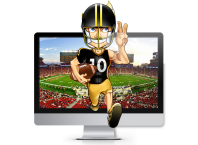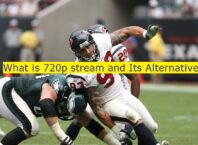Fans of the NFL can’t get enough of their favorite players outmaneuvering the opposition for a score or throwing the perfect pass. Fans, coaches, and players may now access real-time statistics illustrating how remarkable such plays are thanks to technology.
This will help fans see in real-time how NFL Stats can change as well. The NFL approved wearable radio-frequency identification (RFID) transmitters using a Zebra Technologies device in 2014.
Around the same time, Catapult announced that more than a dozen NFL clubs had agreed to employ a wearable global positioning system (GPS) and local positioning system (LPS) gadget. As technology has advanced, so have the statistics and applications of technology.
What is RFID?
The NFL’s RFID monitoring system contains around 30 ultra-wideband receivers and two to three tags in players’ shoulder pads, officials’ tags, the ball, pylons, sticks, and chains at every game.
This equates to around 250 sensors gathering every second of 11-on-11 game data in real-time, from position to distance traveled to acceleration rates, at a pace of 10 times per second. Individual movement is tracked down to the millimeter. Three operators labor carefully behind the scenes to verify that all of the tracking systems are functioning properly.
To make this possible, the NFL worked with each team’s general managers to determine the optimum placements for the nickel-sized tags. During a standard NFL season, more than 1,700 players have RFID tags embedded in their jerseys.
The organization worked with Wilson, the official NFL game ball supplier, and quarterbacks to verify that the integrity, shape, and movement of the ball remained intact for the football itself, which is produced to NFL specifications.
The RFID tag in a football weighs less than 4 grams and makes up less than 1% of the total weight of the ball. When the game begins, all of the RFID tags’ radio frequencies are picked up by strategically positioned receivers around the stadium, allowing for continuous tracking throughout every second of activity.
Position, velocity, rotational information, player speed, passing rates, rushing attempt yards, pass completion rates, receiver separations from defense players, and much more are all included in the data. This information powers the NFL’s Next Gen Stats, which help teams, fans, and broadcasters alike.
Game center data, such as a pass rusher’s average pressure distance from the quarterback at the moment of the throw or sack, are included in the NFL’s Next Gen Stats. The data provides an extra degree of excitement to the game for viewers, particularly if their team sets a new speed record. It has also propelled the game of Fantasy Football to new heights, due to the collection of hitherto unrecorded data.
For the teams, the data gives a precise player participation report, performance metrics, and other sophisticated measures that generate a genuine picture of each player’s performance using machine learning algorithms.
More than 200 new data points are produced after each play. These real-time insights are equally beneficial to broadcasters. During commercial breaks, such real-time data may be utilized to make fun infographics, highlight small yet remarkable actions that could otherwise go unnoticed, or compare a player’s performance to past games.
GPS and LPS are Also Used
This year, five additional franchises have started employing Catapult wearable devices, increasing the total to 19. The company’s cutting-edge technology combines GPS and LPS to improve performance and detect player danger. The gadget is concealed in a vest worn beneath the players’ jerseys and shoulder pads. Within one to four inches, the wearable gadget tracks over 1,000 data points each second.
It gives players real-time stats including distance and training load, as well as heart rate and how quickly they accelerate or decelerate. Coaches and players will benefit from the technology’s capacity to deliver high-level positional, inertial, and event measurements in real-time, both during and after the game.
Each gadget, which measures 48 mm x 40 mm x 6 mm and weighs 53 grams, may be configured to monitor various components, which is important for acquiring position-specific statistics. This allows players and coaches to better understand the demands of each of the game’s varied roles, measure a player’s workload, and keep track of how much contact they make.












